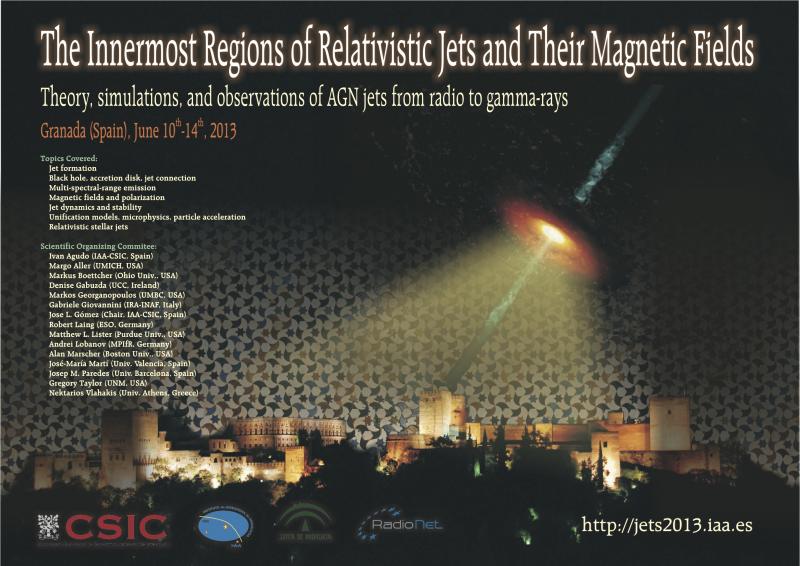The Innermost Regions of Relativistic Jets and Their Magnetic Fields. Granada (Spain). June 10th-14th, 2013.
Gabuzda, Denise
Multi-wavelength Polarization Studies of AGN Jets.
Polarization-sensitive VLBI imaging is the only way to obtain information about the projected structure and degree of order of the magnetic fields of AGN jets. The availability of such observations at multiple wavelengths enables in addition mapping of the distribution of Faraday rotation occurring in the immediate vicinity of the AGN and its jet. Since the observed Faraday rotation depends on the line-of-sight magnetic field, this effectively provides a third dimension to our picture of the magnetic field. Overall patterns in the Faraday-rotation distribution can provide information about ordered structure in the magnetic field and/or thermal-electron density in the vicinity of the jet, whereas turbulence or inhomogeneity in the medium surrounding the jet can give rise to patchiness in the Faraday-rotation distribution. Helical or toroidal magnetic fields associated with a jet can give rise to Faraday-rotation gradients across the jet structure due to the systematically changing line-of-sight component of the helical field. Estimation of magnetic-field strengths are difficult and can be model dependent, but reasonably reliable core-region magnetic fields can be derived via analysis of the frequency dependence of the position of the VLBI core. The move toward pixel-based analyses that has occurred over the past 10-15 years has led to the need to improve our understanding of VLBI images and what can and cannot be reliably deduced from them, leading to a number of Monte Carlo and other numerical studies. Recent observational and numerical results concerning multi-wavelength polarization phenomena will be reviewed.




